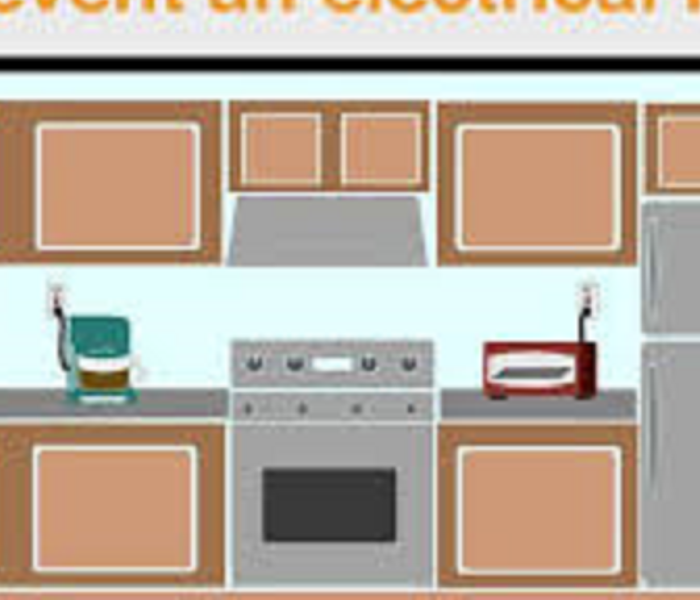Fire Prevention Profile: Electrical Fires
10/18/2018 (Permalink)
As the days grow shorter and the nights grow longer, we all start to rely more heavily on our lights and other electronic devices to keep our homes bright and warm. But, along with the increased use of electricity comes a greater risk of electrical fires.
And since October is fire prevention month, now is a great time to ensure your home is safe from this risk before we get into the bitter winter months.
According to FEMA there are more than 45,000 home electrical fires each year in the United States. Half of those are caused by lighting equipment or home electrical wiring. FEMA says the peak months for these fires are December through March and deaths caused by these blazes peak between the hours of midnight and 6:00 in the morning (a very good reason to have working smoke detectors in your home!).
There are some very easy steps you can take immediately to prevent electrical fires. FEMA has an easy to follow checklist for you:
- Always plug appliances (especially major appliances like washers, dryers and refrigerators) directly into wall outlets.
- Never use an extension cord with those major appliances, as the cords can overheat quickly and cause a fire.
- Unplug small appliances when not in use.
- Plug only one heat-producing appliance (like a coffee maker or microwave) into an outlet at a time.
- Never use an extension cord with a heat-producing appliance.
- Keep light fixtures and lightbulbs away from anything flammable.
- Use lightbulbs that match the recommended wattage of the light fixture.
- Check the cords on appliances often. Replace any cracked, damaged or loose cords.
- Do not overload wall outlets.
- Insert plugs fully into sockets.
- Never force a three-prong plug into a two-prong outlet.
- If you have young children, be sure to install tamper resistant outlets.
- Replace old, worn or damaged extension cords right away.
- Use extension cords for temporary purposes only.
- Avoid putting cords where they can be damaged or pinched (like in heavy traffic areas where they might be stepped on).
- Do not overload power strips.
- Only use power strips with internal overload protection.
Now that you have this list, we recommend you go through your home and check off every bullet point on there (What are you waiting for? Do it now!). Doing so can help protect you, your family and your property, while keeping things bright this winter.


 24/7 Emergency Service
24/7 Emergency Service
